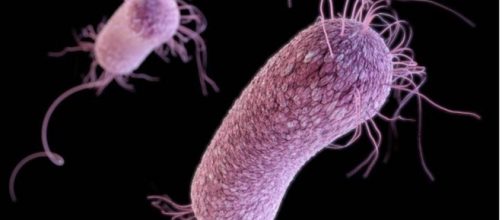Researchers at the Hebrew university have discovered how Bacteria colonize our intestinal cells. The researchers have discovered that bacteria in some way can ‘’sense’’ that they are attached to the intestinal cells and then ‘’reprogram’’ their genes to be able to colonize the intestinal cells by switching on the genes responsible for virulence and metabolism.
Bacteria is the oldest known form of life, it is spread out all over the fossil record of living things and to this date they are still the most common living organism on earth. Since the day biologists started studying the behavior and nature of bacteria they were always impressed and baffled by its incredible abilities and genetic sophistication.
For a long time bacteria was considered a 'dumb'' living organism which has no choice to make whatsoever. But the new discovery showed that bacteria are ''intelligent'' enough to be aware of its surrounding environment and make the needed changes for itself to survive and grow
Deadly bacteria
Bacteria could be very helpful for other living organisms including us, but also at some points bacteria could be very harmful to us. One example of the harm that could be caused by bacteria is a deadly disease called ‘’infectious diarrhea’’, a common disease among children living mostly in the developmental countries, Such disease (among many others) is caused by a kind of bacteria called ‘’ enteropathogenic bacteria’’ which infect people through contaminated nutrition, the infection happens when these bacteria express specific genes that code for specific proteins, these proteins mostly cause the infection but up until now the mechanism in which the infection happens is not fully understood.
Tracking the genes
The researcher figured out a way to know whether bacteria do express specific genes while attached to the intestinal cells or not. In order to do so, they engineered a specific gene that would be colored green under a microscope if expressed, when the researchers looked under the microscope they actually saw that the attached bacteria have a green color while the non-attached bacteria have no color.
"The next steps include mapping in detail the genes that change their expression upon attachment, and describing the precise effects of this expression remodeling," said the head researcher. "Another important issue is testing whether similar regulation is involved in the infection processes of other pathogens."
Conclusion
This could be a very useful discovery for further development of antibiotics against deadly diseases caused by the enteropathogenic bacteria, it could also have some implication on our understanding of how life really works at the microscopic level.

